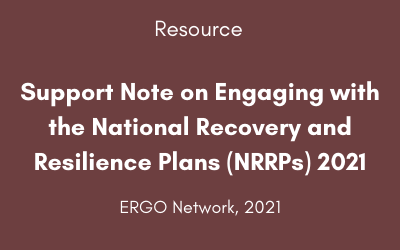ERGO Network opinion on Multiannual Financial Framework for Roma
Significant shifts are underway as the EU prepares its next long-term budget (2028–2034). Global crises, digital change, and new leadership are shaping priorities, and the European Commission’s recently published Roadmap focuses heavily on competitiveness and efficiency.
However, one crucial issue is missing: Roma inclusion.
Over 6 million Roma live in the EU—80% at risk of poverty, fewer than half in paid work, and 1 in 4 facing daily discrimination. The proposed budget risks cutting or merging key social programs, threatening the fragile progress made so far.
Roma inclusion must be built into the next multiannual financial framework (MFF) from the start to meet the EU’s 2030 goals and uphold the European Pillar of Social Rights.
ERGO Network has outlined clear recommendations to ensure this happens:
- Keep rights-based rules: Tie EU funds to real action, including national Roma inclusion strategies.
- Protect social funding: Maintain the EU’s Cohesion Policy, which supports education, housing, and health for vulnerable groups.
- Keep ESF+ independent: The European Social Fund+ must remain a dedicated tool for fighting poverty and inequality.
- Enforce EU values: Countries should not violate basic rights – through racism, discrimination, or abuse.
- Support civil society: Roma-led organisations need resources to advocate and build inclusion from the ground up.
The next EU budget is a test of values. A competitive Europe must also be a fair one, and the MFF must deliver on both.





